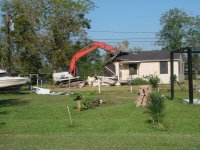MF283
Platinum Member
I will be doing this myself it is a small roof, however I have been using materials I plan on using building my house to see if they meet advertising claims.
Agree air circulation is a proven method of removing moisture however help me understand where the air will circulate to and from when I have installed a grid of enclosed 1x4" cells across the entire roof? The top and sides will also be enclosed by a ridge cap and flashing. I appreciate your feedback just don't see the science in this concept.
It will allow more air through the ribs being it's not directly on the sheeting. 2X6 ON BARNS AROUND HERE & 1X4 on OSB as other's have stated.
Ronnie
